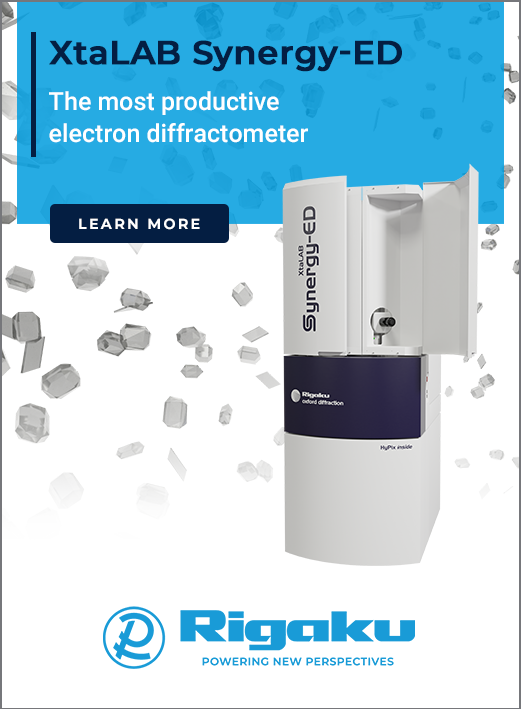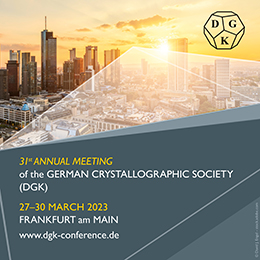


Commentary
Making ripples in the comparison of calculated and experimental maps for real-space refinement and assessment by analytic modelling of local resolution
![Fig. 1 [Fig. 1]](https://www.iucr.org/__data/assets/image/0008/155735/me6201fig1.png)
Figure 1. Large differences in local resolution are typically observed in cryoEM maps and the work of Urzhumtsev and Lunin allows the refinement of the local resolution of the map as an atomic parameter. In the figure, resolution variations are represented as identified by DeepRes from the simulated map of the 39 kDa human cartilage glycoprotein tetramer filtered at 3, 5, 7 and 9 Å. Reproduced from Ramírez-Aportela et al. (2019).
Our experimental knowledge of structure in atomic detail is derived from the electron density or electrostatic potential map interpreted as an atomic model. Conversely, we calculate the theoretical map from our model and comparison of both sources is used to refine (Urzhumtsev & Lunin, 2019) and improve this knowledge or assess its correctness. In this issue of IUCrJ, Urzhumtsev & Lunin (2022) revisit first principles underlying imperfections in the experimental maps in order to propose a map calculation with variables to account for atomic displacement and local resolution linked to each atom. The new maps reflect the observed inhomogenous resolution with superior accuracy and their expression is nearer to physical reality, along with the useful feature of simplifying the necessary calculation of derivatives with respect to all parameters.
The last decade has seen an expansion of powerful experimental structural techniques, the ‘resolution revolution’ in cryoEM (Kühlbrandt, 2014), micro-electron diffraction (Clabbers et al., 2022) or serial crystallography from tiny crystals (Standfuss & Spence, 2017), that are gaining importance in expanding the basis for macromolecular structural knowledge. These methods provide information down to the atomic level but frequently, resolution varies to a large degree across different areas of the map, leading to the observation of very different local limits as illustrated in Fig. 1. The effect, prominent in maps where the main distortions are caused by harmonic disorder of the structure and limited resolution, may also be relevant in X-ray or neutron crystallography and is presented in a general way. Addressing differences in local resolution is recognized as essential to avoid misleading and over-interpretation of cryoEM reconstructions (Vilas et al., 2020). The work of Urzhumtsev and Lunin illustrates the shortcomings and limitations of accounting for this phenomenon through a combination of atomic displacement parameters and global resolution cut-off. While the atomic positional disorder blurs atomic densities, the resolution cut-off, alongside this, generates Fourier ripples, which significantly contribute to the map far from the atomic centre. Both types of distortion can be described by the same mathematical operation of a convolution but require different functions. Instead, the authors suggest a method to calculate model maps at every point, extending the concept of a local resolution down from a region to the characterization of each individual atom. This value will naturally be adjusted on the fly in the course of refinement.
In the absence of an analytic expression of the convolution between the Gaussian function accounting for displacement and the interference function limiting resolution, the latter has been recast into a shell decomposition allowing the calculation, in a closed analytical form, of the atomic model map distorted by restricted resolution and positional disorder.
The particular implementation and large-scale refinement tests on real data remain to be explored for each envisaged application, and it is anticipated that such development will soon follow. Nevertheless, the present work provides proof of principle of the superior effect of accounting for Fourier ripples with synthetic data calculated for a protein model and establishes the computational advantages.
The availability of accurate predicted models for protein components of macromolecular complexes (Jumper et al., 2021; Baek et al., 2021) opens new opportunities while demanding advancements in the treatment of errors in experimental determinations. Enhancing the quantitative comparison of calculated and experimental maps will be decisive in extricating unbiased experimental information beyond prior knowledge and the authors – along with the contribution in this paper – raise a number of questions remaining to be addressed. These include the inverse problem of calculating their parameters from the experimental map, the extension of the model to anisotropic displacement parameterization or subatomic resolution scenarios in charge-density studies or the current limitations in the absence of complete data and the need for optimally accounting for atomic scattering where unaccounted environmental effects or dynamic effects occur (Gruza et al., 2020; Samperisi et al., 2022). None of these considerations detracts from the interest of their proposed map calculation and application in refinement but rather adds to the debate.
This development will enable real-space refinement in a more appropriate way and thus be welcomed by the community once implementations tailored to each envisaged application are available in refinement software. In the meantime, this theoretical proposal stirring discussion on how to best connect model and experiment for a critical and accurate assessment is timely, and is a development that will make ripples in the structural sciences.
Acknowledgements
Professor Kay Diederichs is acknowledged for helpful discussions.
Funding information
Ministerio de Ciencia e Innovación and European Union Regional Development Fund (MICINN/AEI/FEDER/UE) are acknowledged for grant No. PID2021-128751NB-I00.
References
Baek, M., DiMaio, F., Anishchenko, I., Dauparas, J., Ovchinnikov, S., Lee, G. R., Wang, J., Cong, Q., Kinch, L. N., Schaeffer, R. D., Millán, C., Park, H., Adams, C., Glassman, C. R., DeGiovanni, A., Pereira, J. H., Rodrigues, A. V., van Dijk, A. A., Ebrecht, A. C., Opperman, D. J., Sagmeister, T., Buhlheller, C., Pavkov-Keller, T., Rathinaswamy, M. K., Dalwadi, U., Yip, C. K., Burke, J. E., Garcia, K. C., Grishin, N. V., Adams, P. D., Read, R. J. & Baker, D. (2021). Science, 373, 871–876.
Clabbers, M. T. B., Shiriaeva, A. & Gonen, T. (2022). IUCrJ, 9, 169–179.
Jumper, J., Evans, R., Pritzel, A., Green, T., Figurnov, M., Ronneberger, O., Tunyasuvunakool, K., Bates, R., Žídek, A., Potapenko, A., Bridgland, A., Meyer, C., Kohl, S. A. A., Ballard, A. J., Cowie, A., Romera-Paredes, B., Nikolov, S., Jain, R., Adler, J., Back, T., Petersen, S., Reiman, D., Clancy, E., Zielinski, M., Steinegger, M., Pacholska, M., Berghammer, T., Bodenstein, S., Silver, D., Vinyals, O., Senior, A. W., Kavukcuoglu, K., Kohli, P. & Hassabis, D. (2021). Nature, 596, 583–589.
Kühlbrandt, W. (2014). Science, 343, 1443–1444.
Samperisi, L., Zou, X. & Huang, Z. (2022). IUCrJ, 9, 480–491.
Standfuss, J. & Spence, J. (2017). IUCrJ, 4, 100–101.
Urzhumtsev, A. G. & Lunin, V. Y. (2019). Crystallogr. Rev. 25, 164– 262.
Urzhumtsev, A. & Lunin, V. Y. (2022). IUCrJ, 9, 728–734.
Vilas, J. L., Heymann, J. B., Tagare, H. D., Ramirez-Aportela, E., Carazo, J. M. & Sorzano, C. (2020). Curr. Opin. Struct. Biol. 64, 74–78.
This article was originally published in IUCrJ (2022). 9, 718–719.
Note: The first follow-up paper on practical applications has recently been published in Acta Cryst. D.
This is an open-access article distributed under the terms of the Creative Commons Attribution (CC-BY) Licence, which permits unrestricted use, distribution, and reproduction in any medium, provided the original authors and source are cited.









